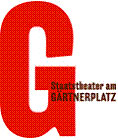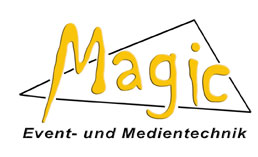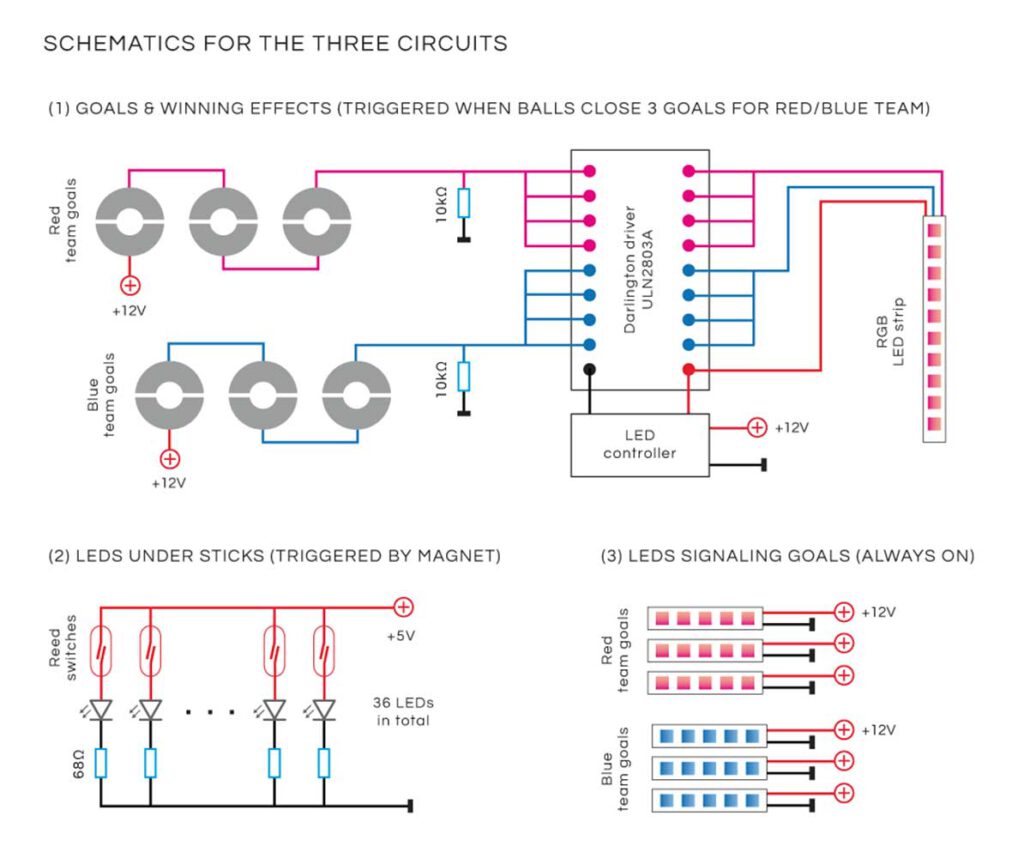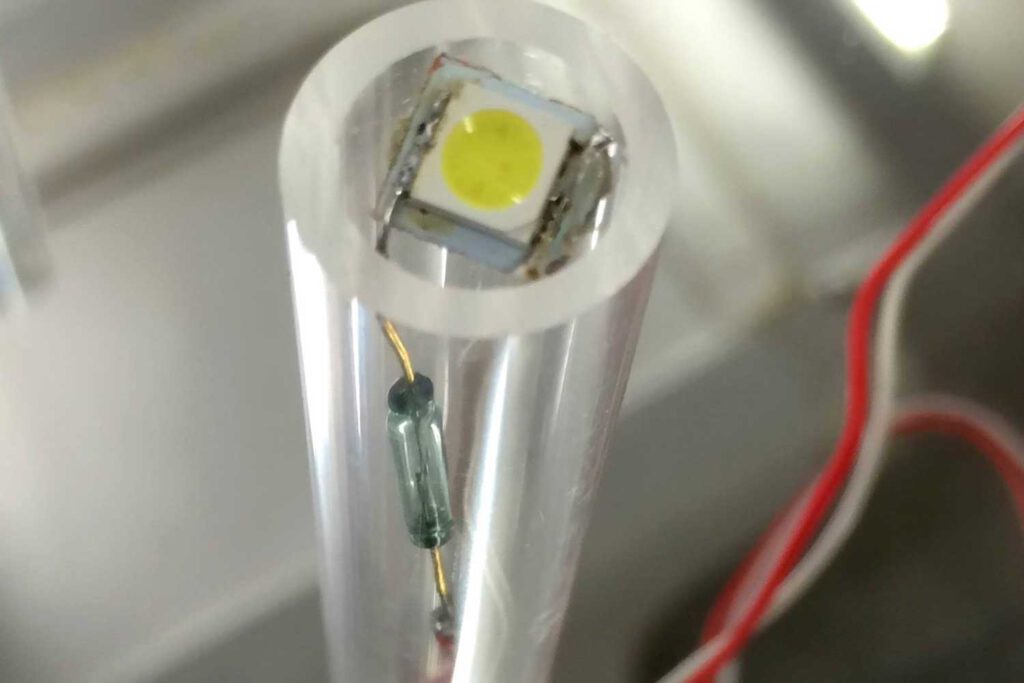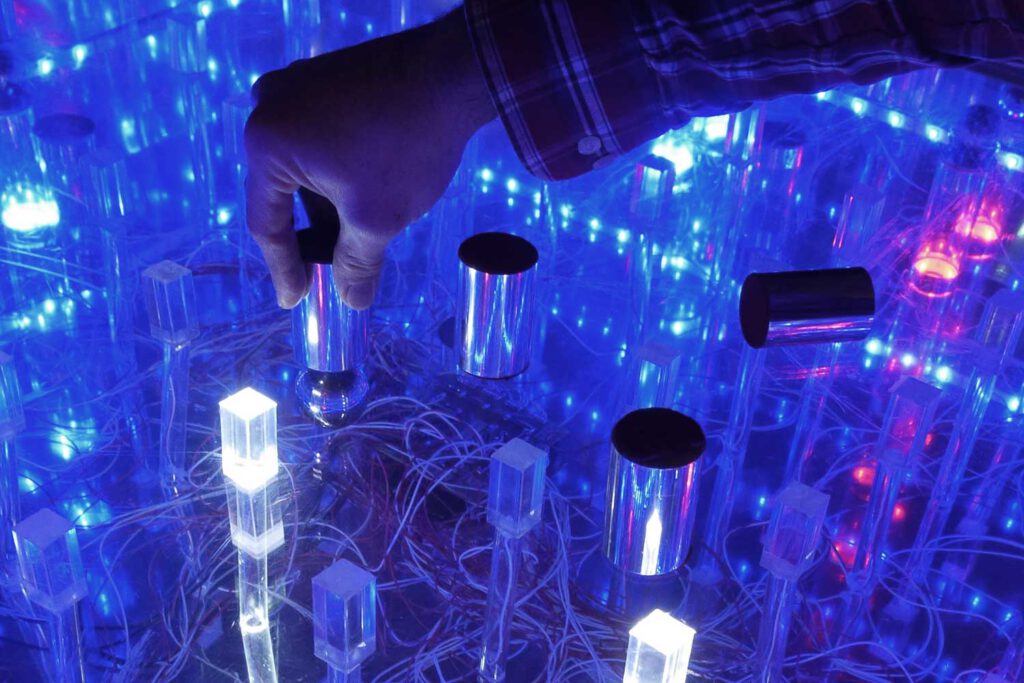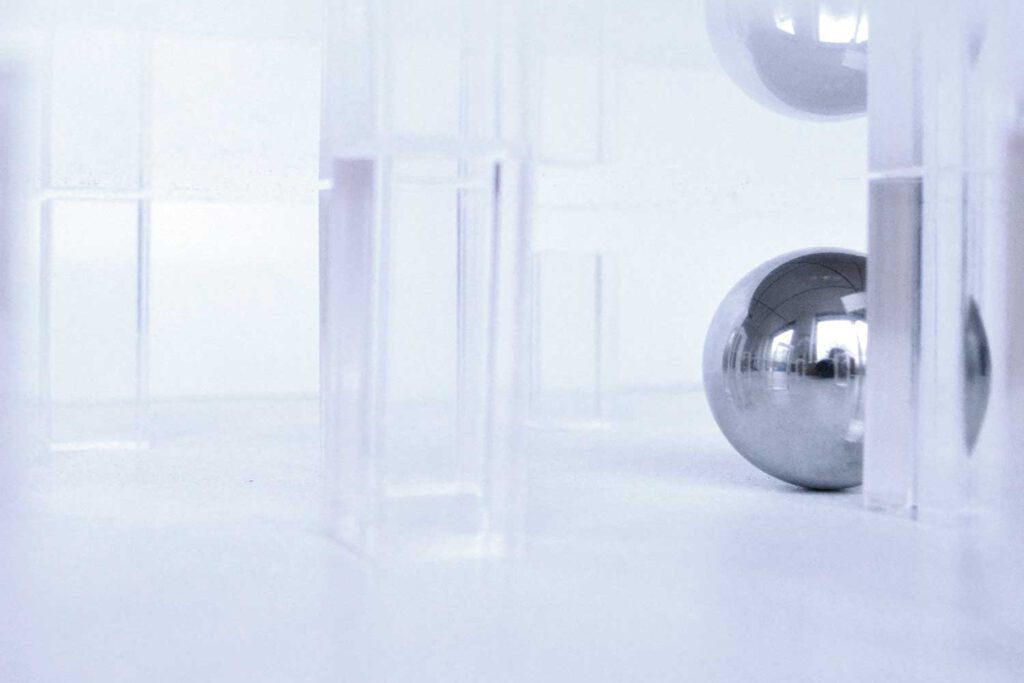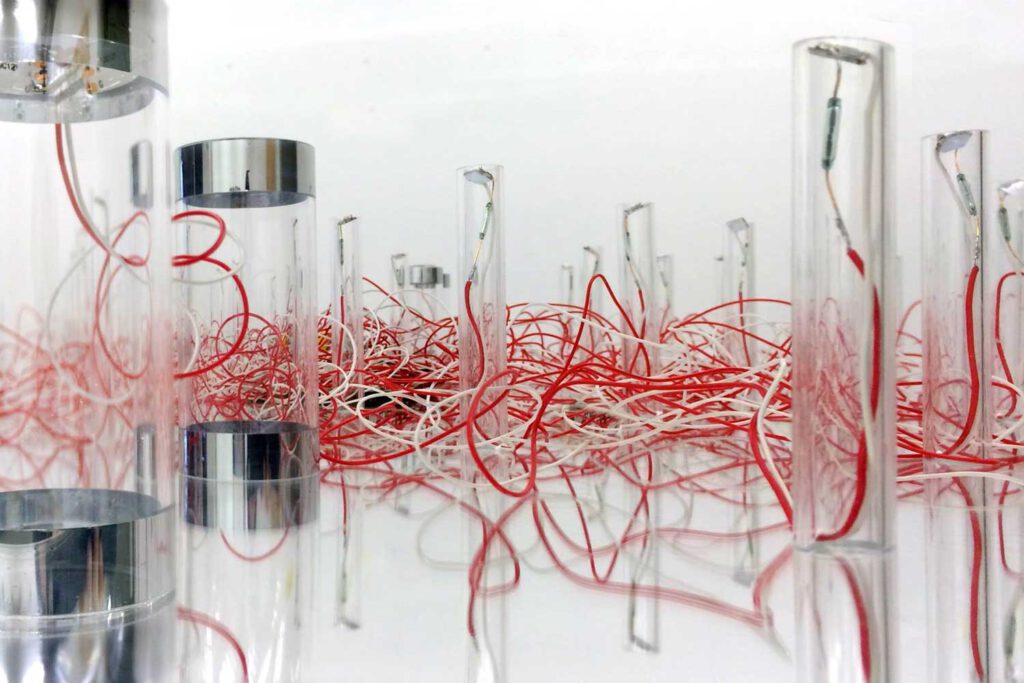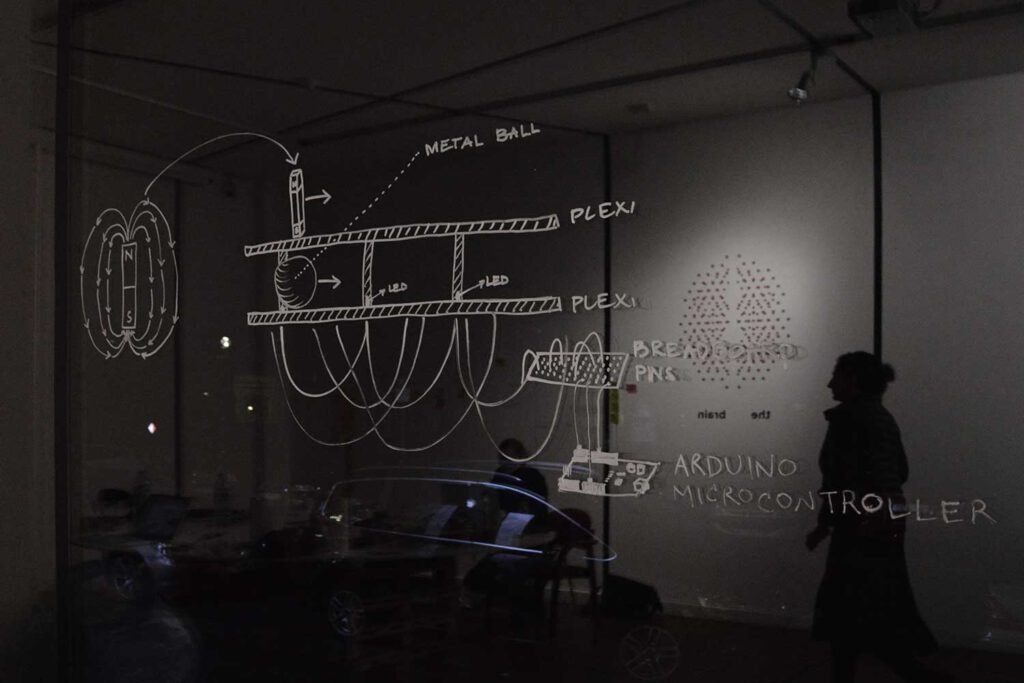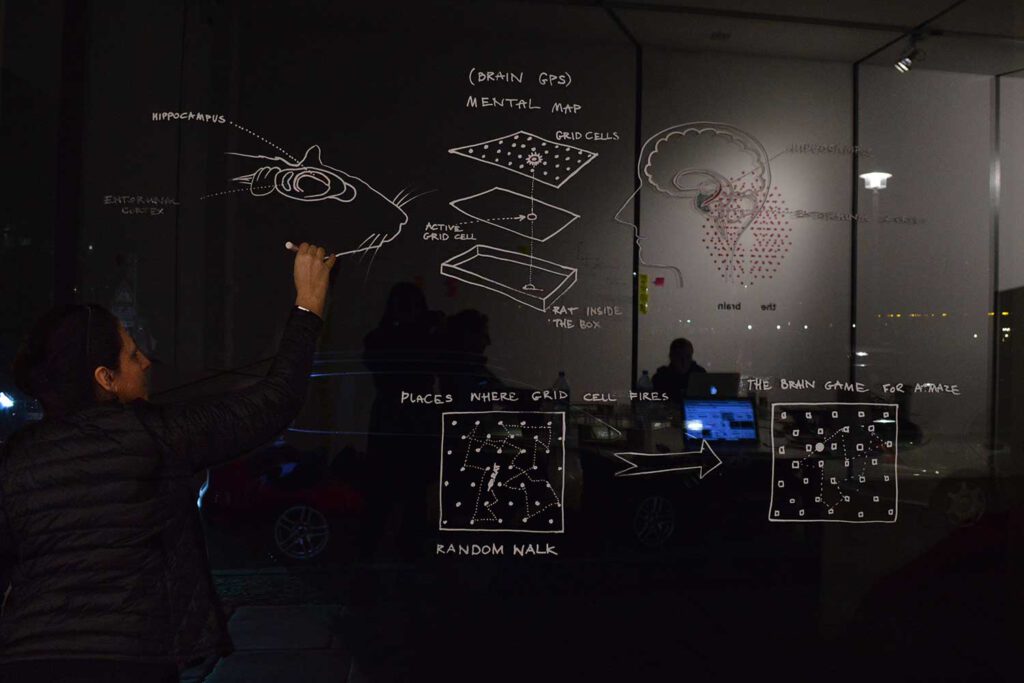AQUARIUM – video mapping in public space
On occasion of its 850th anniversary Munich celebrated itself with an array of events surrounding the motto “Building Bridges”. As a Place that like no other depicts the hip glamour of well-being the city basks in, the Gärtnerplatz in the district of Isarvorstadt attracts a vast number of people with its cafés, fashion shops, grassy places to lounge on and the opera house, that was erected in the second half of the 19th century. This music theatre, which mainly stages popular operas, operettas and musicals, was itself used as a stage for the video installation “Aquarium” by Karina Smigla-Bobinski and Beatriz von Eidlitz, causing a distorting spiel.
After the visitors left the theatre, a surreal transformation took place behind the round arch windows on the first floor, which open up to the foyer. Where just moments before music lovers had lounged, enormous goldfish suddenly swam in a pitch black, fathomless space, that had been intricately designed by Smigla-Bobinski via Video-Mapping thechnology. It seemed as though the empty theatre became the home of magically shimmering, gigantic pond creatures. They moved slowly about in this fathomless space, majestically showing off their colourful bodies, and doing what we perceive them to always do: gaping through the windows at the city night.
Fish eye is the name for a camera lens that, similar to the sense organ of these animals, distorts the 180 degree view of the world. The gaze of a fish naturally distorts our physical form and a camera lens, no matter what particular kind, that is pointed at us makes us conscious of our own physical form. Without following this path of association any further, one can nonetheless point out, that “Aquarium” plays with the concept of seeing and being seen. Looking at the fishes intrinsically means a glare back, although by reversing the scales, the artist also reverses the power relations.
This confrontation poses questions about the boundaries between perception and understanding. Smigla-Bobinski refers to a speech held by David Foster Wallace called ‚This is Water‘, which he presented to the university graduates in 2005. In his speech Wallace tables the parable of two young fish. They meet an older fish while swimming, who asks them: ‚Hey guys, how’s the water?‘. The two younger fish keep on swimming, but one of them turns around and asks in return: ‚What the hell is water?‘. It’s deeper meaning revers to the inability to perceive the truth about the nearest and most natural reality around us. Wallace deduces his plea for empathy from his parable.
The daily routines and the pursue for money and influence, that radically limits our awareness for other people. Through the monumentalising the fish and the location choice of the theatre, an in itself metaphorical place of seen and being seen, Karina Smigla-Bobinski accomplishes to create the needed irritation in the perception of the viewer to jump start the reflexion about the existence of every individual in a social structure.
In Aquarium the animals move in a complex system of symbolic references. In western cultures the spectrum of meaning is broad – the most interesting ones might be the religious-mythological and the depth psychological usage, where the fish symbolise (transcendent) truths that are hidden in another element. C.G. Jung defined them as the archetype of the self. In mythology and eastern cultures goldfish play a special role. In a well known and recited legend these colourful fish lived in the heavenly kingdom, until their play became to wild and they fell onto the earth. They became the lucky charm that also promise wealth and prosperity. Their many possible colours, from yellow over gold to red, makes every goldfish bowl become a melting pot or aesthetic diversity and therefore a metaphor for the diversity of human culture.
Aquarium not only transform the theatre into a goldfish bowl of the bourgeois elite, but the Gärtnerplatz and the late night visitors into a biotope, a model of life in the city. The placement of the fish in the foyer pushes them into the world of humans and lets the theatre become a place, where they coexist irritably in the same element. We are forced to ask ourself. ‚what the hell is water – and what is air?‘. And suddenly the separating and well as the combining get tangible. The search for the individual happiness is moved into this world with all the material economical and social challenges: the real life takes place inbetween empathy and goldfish bowl.
© Dr. Thomas R. Huber, 2013
DIG DEEPER
Goldfish – Wikipedia
Introduction to fish imagery in art – Springer Nature
Swimming with the fishes: Fish as a transformational symbol – Deale A. Hutton, A Thesis Submitted to the Faculty of The College of Imaging Arts and Sciences
ART CONNECTIONS
